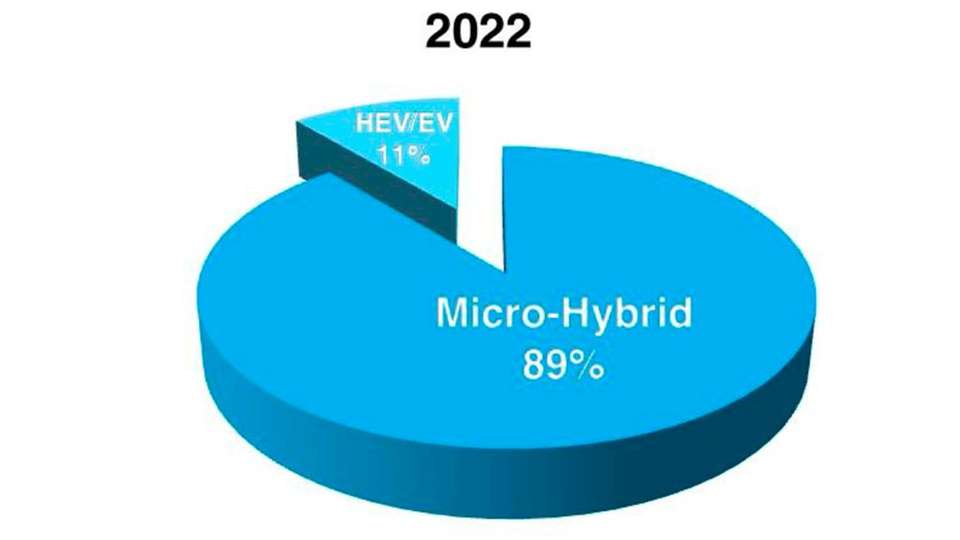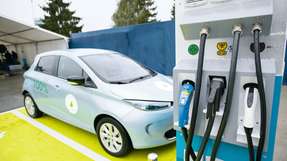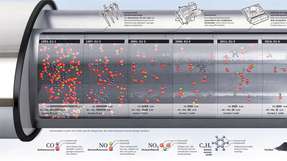There is growing demand for vehicles which use less fuel and are less harmful to the environment, mainly due to government legislation and incentives. To meet this end all major vehicle OEMs are developing types of hybrid and electric vehicle including plug-in hybrids, battery electric vehicles, fuel cell vehicles and also micro-hybrids.
These non-electric vehicles with an Internal Combustion Engine (ICE) that use a stop-start system, are predicted to remain the dominant hybrid and electric vehicle type up to at least 2022, according to the IHS report "Opportunities for System and Semiconductor Manufacturers in Hybrid and Electric Vehicles".
Benefits Of Stop-start Systems
Major OEMs are producing this type of vehicle as they recognise the CO2 saving benefits from the enabling technology. Depending on driving profile, the reduction in CO2 emissions can be up to five percent.
Whilst micro-hybrids are not strictly hybrid vehicles, the proportion these vehicles represent of the total hybrid and electric vehicle production market is expected to increase from 77 percent in 2010 to 89 percent of the total hybrid and electric vehicle production market in 2022. It is estimated that around 58 million of these vehicles will be produced by that time.
Micro-hybrids Are On The Safe Side
Sales to date of "true" hybrid and electric vehicles have not performed as expected. Stubbornly low consumer interest has resulted in poor sales, exacerbated by the current global economic situation. OEMs still have to take care of such issues as range anxiety, high prices and the lack of charging infrastructure and battery technology. Until these issues are solved, OEMs are choosing the "safe" option of micro-hybrids. Not only is it a less complex solution than a plug-in hybrid, but it is also a much quicker and cheaper way of meeting emissions legislation.
Hydrogen As Long-term Solution
While the short to midterm belongs to the stop-start system, longer term hydrogen might represent the best fuel solution. In an effort to re-engage consumer interest and shake-up the true hybrid and electric vehicle market, some OEMs are introducing hydrogen fuel cell vehicles like Hyundai�??s ix35 fuel cell SUV.
Sedans and SUVs are most likely to adopt hydrogen fuel cell technology for two reasons. Firstly, these vehicles are physically large enough to store large quantities of hydrogen. Secondly, sedans and SUVs are typically the most profitable models so some of the extra cost associated with a fuel cell powertrain could be absorbed into the vehicle�??s margin. Toyota recently announced that they will be producing a fuel cell sedan in 2015.
In terms of the powertrain systems involved for a hydrogen fuel cell vehicle, they are very similar to that of a hybrid or electric vehicle, apart from the energy source. The high voltage battery in conventional hybrid or electric vehicles is effectively replaced with a hydrogen gas storage tank and a hydrogen-to-electricity conversion unit. However, for battery management system suppliers and the associated semiconductor companies, this is a concern as the high voltage battery management is negated for hydrogen fuel cell vehicles.













